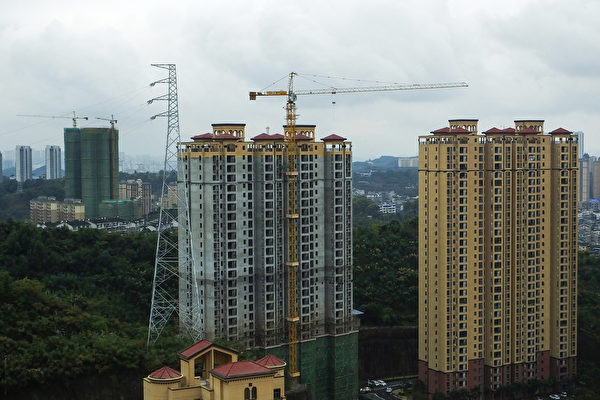During the Mid-Autumn Festival holiday, Chinese real estate companies increased their efforts in launching new properties and promotions, but the sales area of new houses still decreased by 30% compared to the previous year, showing a lackluster performance for the traditionally robust period known as the “golden September and silver October.” Among the top-tier cities, Guangzhou suffered the most with a 65% year-on-year decrease in sales.
On Wednesday, several real estate research institutions successively released data on property transactions in key cities during this year’s Mid-Autumn Festival holiday period (September 15-17). From first-tier to second-tier cities, despite developers implementing a series of promotional measures, the market response has been tepid with minimal impact.
According to data from China Index Research Institute, the daily average sales area of new houses in 25 representative cities decreased by approximately 29% compared to the same period last year (Note: Due to the consecutive holidays of Mid-Autumn Festival and National Day in 2023, the comparison was made using the daily average transactions during the holidays).
Based on data from Lianjia Research Institute, in the 12 monitored cities, a total of 1,670 new houses were sold with a daily average of 557 units, marking the lowest level since 2018 and a 43.2% decline in daily average transactions compared to the Mid-Autumn and National Day holidays in 2023.
Another real estate research institution, E-House China R&D Institute, revealed that from September 1 to 12, new homes in 30 key cities recorded a total transaction area of 2.95 million square meters, a 6% decrease compared to the first 12 days of August and an 18% year-on-year decline.
According to a report by China Index Research Institute, in Guangzhou, more than 40 property projects launched promotions such as fixed prices and discounted housing units. Despite an increase in market popularity and visits, the transactions remained sluggish, with a daily sales area decrease of 65%, totaling approximately 14,000 square meters, making it the weakest performance among the four first-tier cities.
Apart from the regular promotional activities by developers, the Shenzhen municipal government introduced support measures like renovation subsidies for homebuyers, yet the real estate market did not show signs of recovery. The daily average sales area of new houses in Shenzhen decreased by 7%, with a total transaction area of 12,000 square meters.
Shanghai witnessed a 17% decrease in the daily average sales area of new houses, although there was certain enthusiasm in the luxury home market. The average price at the Cuihu Phase VI project soared to 210,000 yuan, attracting over 70 buyers on the first day.
Beijing saw a daily average sales area of 4,000 square meters for new homes, higher than the previous year’s holiday period, making it an exception among the first-tier cities.
Moreover, sales performance in several second-tier hotspots cities fell short of expectations. Wuhan reported a total transaction of around 37,000 square meters for new houses, a 54% decrease year-on-year, while Hefei recorded a 77% decline with 4,000 square meters sold.
Xu Yuejin, deputy director of research at China Index Research Institute, pointed out that during the Mid-Autumn Festival holiday, despite increased marketing efforts at sales offices in various locations and a rise in the number of visits to core urban properties before the holiday, the overall market performance remained lackluster, with a continued phenomenon of differentiation between hot and cold markets.
A marketing executive from a listed real estate company in Beijing expressed his belief to reporters from “21st Century Business Herald” that the future trend of the Chinese property market will continue to decline. He stated that the space for “price for quantity” exchanges is shrinking, with prices of many projects already at low levels, some even operating at non-profit or loss-making status. Even during the peak sales season of “golden September and silver October,” there is limited room for further price reductions, and the availability of discounted housing units is scarce.
Furthermore, after an initial release in the market, the demand has become relatively insufficient. The storing of clients for the projects under the company has generally been unsatisfactory. Under the same discount intensity, the number of stored clients is significantly lower than the previous two months.
“The supply and demand sides are still bargaining, and neither wants to compromise,” he said.

